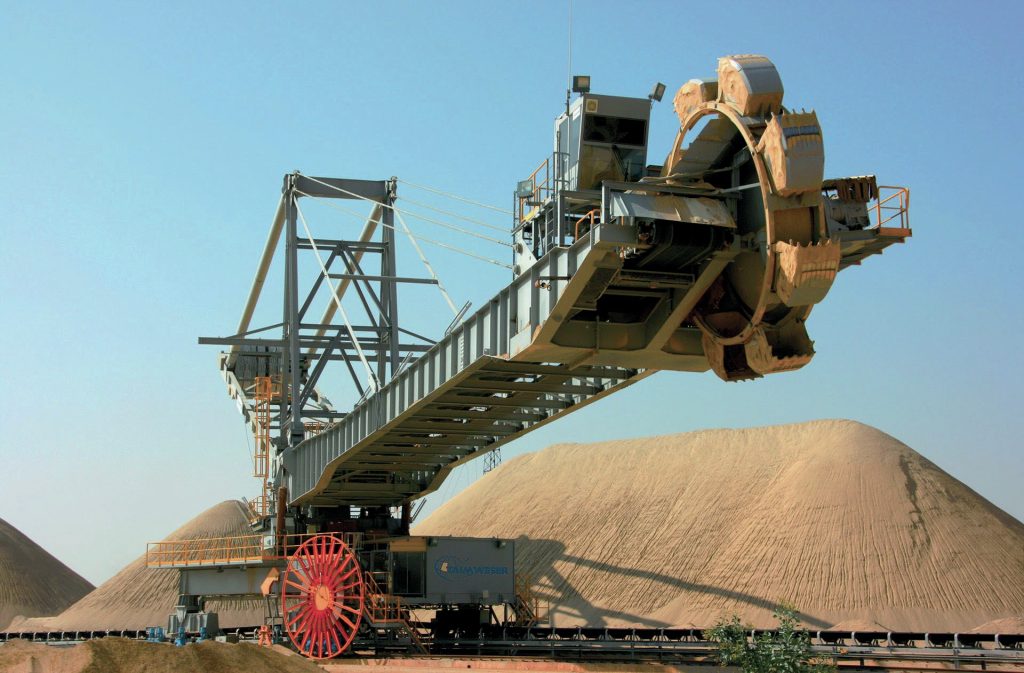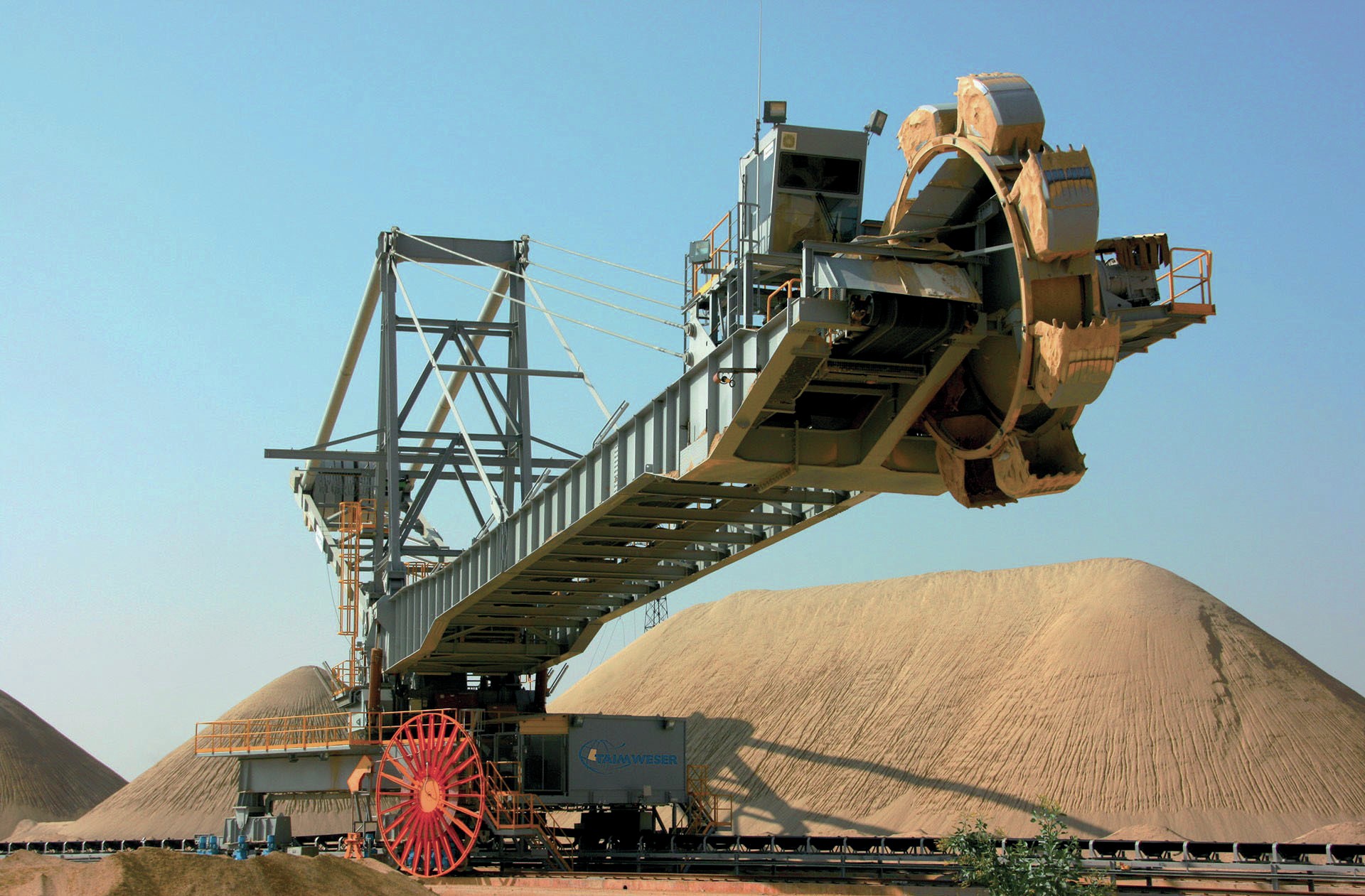Sulphur 417 Mar-Apr 2025

19 March 2025
Developments in phosphate markets
PHOSPHATES
Developments in phosphate markets
Tight supply limits availability as China maintains export restrictions.

The global phosphate fertilizer market has been experiencing persistent supply constraints, mainly due to export restrictions from China. This has kept prices at historically high levels despite affordability concerns and weakened demand in certain key markets. Looking ahead, demand is expected to recover in some regions, particularly India, while other markets, such as Brazil, continue to struggle due to economic factors.
Supply constraints
Phosphate markets have been tight going into 2025. The main reason for this is China. Although China remains the largest global phosphate producer, it has been enforcing strict export controls since 2021. As expected, China brought its restrictions on exports back in December and has continued them through January and February. They are expected to be loosened somewhat in April, following the seasonal pattern that has become established over the past few years, with exports during Q2 and Q3, followed by restrictions in Q4 and Q1. But no fresh export sales from China are expected through Q1 under the current regulatory regime, as authorities seek to push domestic prices down to an acceptable level, with only previously-agreed volumes likely to move. In 2024, total Chinese exports of DAP, MAP and TSP were 7.3 million t/a, and the figure is likely to be the same for 2025. These restrictions have effectively reduced Chinese finished phosphate exports overall by about 35% compared to the 2021 figure. There has been an increase in exports of phosphoric acid rather than finished phosphates, which appears to be an attempt to circumvent restrictions while maintaining some presence in global markets. However, there is significant risk that exports are cut even further in the medium term depending on government restrictions. It is unlikely that restrictions will reverse course, and for exports to increase.
The restrictions are balanced somewhat by expanding supply elsewhere. In Morocco, 2024 was OCP’s strongest ever export year, with full year DAP+MAP+TSP exports expected to reach 9.6 million t/a. This year looks to repeat the record, as prices stay high, inputs relatively low and demand looks to recover. OCP has been focusing on ramping up TSP exports, particularly to India, despite setbacks on NBS rates and farmer adoption of TSP. OCP is also expanding exports to Ethiopia. Prospects for Moroccan exports to the US remain limited, however, due to the imposition of duties on Moroccan phosphate imports. This has had a marked impact on OCP’s consumption of sulphur and sulphuric acid, reaching 29 million t/a of acid equivalent in 2024, up 32% on 2023. Exports from Morocco may be higher than currently expected, particularly in the early months of 2025. OCP already significantly increased its production and sales, with granular phosphate exports reaching a new record in 2024. OCP likely has tonnes to sell; but it is expected to be cautious in its approach to the market to maintain price support.
In the US, production continues to slide lower. Publicly reported sales of phosphate fertilizers in the United States hit a decade low in 2024 Q3 with total reported sales from Mosaic, Nutrien and Itafos dropping below 2.2 million tonnes, a fall of 9% year on year, as phosphate rock resources are depleted, limiting finished fertilizer output. This, together with duties on Moroccan and Russian imports, are leading to an increasingly tight phosphate market in the US.
Demand constraints
High prices have also had an impact on demand, particularly in the major consuming nations of Brazil and India. In Brazil this has been exacerbated by the depreciation of the real against the US dollar. The ratio of crop prices to phosphate prices is at its lowest level since 2022, and almost since the record low of 2008, limiting affordability. Brazilian demand did not rise in 2024, though there has been a rise in cheaper superphosphate imports, both TSP and SSP, and an expanded planting area for soybean crops. This trend is expected to continue in 2025, with TSP and SSP replacing more expensive MAP and DAP. Some of the demand concerns will alleviated by increased production from the new plant at Serra do Salitre, which commissioned in 2024 and which is ramping up operations. The site has a capacity of up to 1 million t/a, though this is mostly as SSP, as MAP has poorer margins, and the rock is not suited to TSP production. The overall result is expected to be a stagnant or slightly improved demand. Demand for MAP to Brazil has remained slow, with prices stable for seven months at a short-term ceiling around $635/t c.fr. Seasonal buying patterns and worsening affordability have hit the market, and buyers have focused purchasing on cheaper alternatives such as SSP, TSP and NPs, enabling them to maintain overall P2O5 stocks at a relatively healthy level despite MAP drawdown, which contrasts to the situation in India. Tight supply should limit MAP price downside, though poor affordability and demand destruction will add downwards pressure.
India has a very quickly growing population and rising agricultural demand as a result. Despite the recent slump in imports and production, this is not expected to persist and CRU projects demand to recover strongly throughout the remainder of the 2020s. According to CRU estimates, India has 900,000 tonnes of DAP in stocks, the lowest level seen since January 2022. Though the first three months of the year are the lowest demand season for India, demand quickly picks up by May as farmers prepare for the Kharif crop. When stocks previously were this low, this was followed by an extremely strong import season the following year. However, that would rely on a significantly strengthened subsidy package for the Kharif (April) season, as importers are facing very poor margins. India’s delivered DAP prices have remained stable for more than three months despite seasonal demand slowing. The price had climbed 26% between the end of May and the start of October but has fallen only 1.5% since then. Stocks in India are exceptionally low, supporting off-season restocking demand. Suppliers are aware of this and are resisting any pressure for price cuts. Still, buyers will be sensitive to prices, as import margins remain heavily negative at current prices and under current subsidies.
US phosphate prices remain among the highest in the world due to tariffs imposed on imports from Morocco, Russia, and China, while as noted above, domestic phosphate production has been declining due to poor-quality phosphate rock and weather-related disruptions in Florida. The potential imposition of tariffs on Mexican phosphate exports could further reduce supply, pushing prices even higher.
New capacity
The global phosphate market saw prices peak in Q4 2024, with a combination of weak demand and limited supply leading to stagnation. Although prices are not expected to rise significantly, they will remain at elevated levels due to continued supply tightness. In the longer term, however, new capacity is expected to bring prices down. OCP and Ma’aden are responsible for almost all of the upcoming capacity build out globally. In Morocco, expansion of TSP production is underway, with plans to bring online 1 million t/a of capacity in Jorf Lasfar and an additional 4 million t/a in a new phosphate hub in Safi, in 2027-28. Ma’aden’s massive Phosphate III project will bring online 3 million t/a of DAP and MAP capacity in two phases. The first phase is expected in 2027-28, and the second phase around 2030.
Elsewhere, JIFCO has signed a MoU with the Jordanian Chamber of Industry to encourage the company to provide phosphoric acid for domestic fertilizer producers. India’s Ostwal group, parent company of MBAPL, has said they expect their new 1.0 million t/a capacity DAP/NPK plant to be commissioned by October 2026. In Egypt, China-based Asia-Potash has announced plants to invest $1.6 billion in Egypt. The project will be an industrial complex to mine 2 million t/a of phosphate and convert them into fertilizers.
High prices to persist
Trade policies, currency fluctuations, and affordability challenges pose risks to market stability. US tariffs on Canadian potash imports have already pushed up prices in that market. If Canada were to impose similar tariffs on US phosphates, that would similarly raise prices there. Rising sulphur prices are also having an impact on phosphates.
While the long-term outlook suggests some relief as new capacity comes online post-2027, the phosphate market will remain tight in the near-to-medium term, making affordability a key concern for global importers. Overall, scarce supply is likely to continue to support prices for granular phosphates despite poor affordability relative to downstream agricultural products as well as other nutrients, though there is potential for further price downside from Q2 2025.





